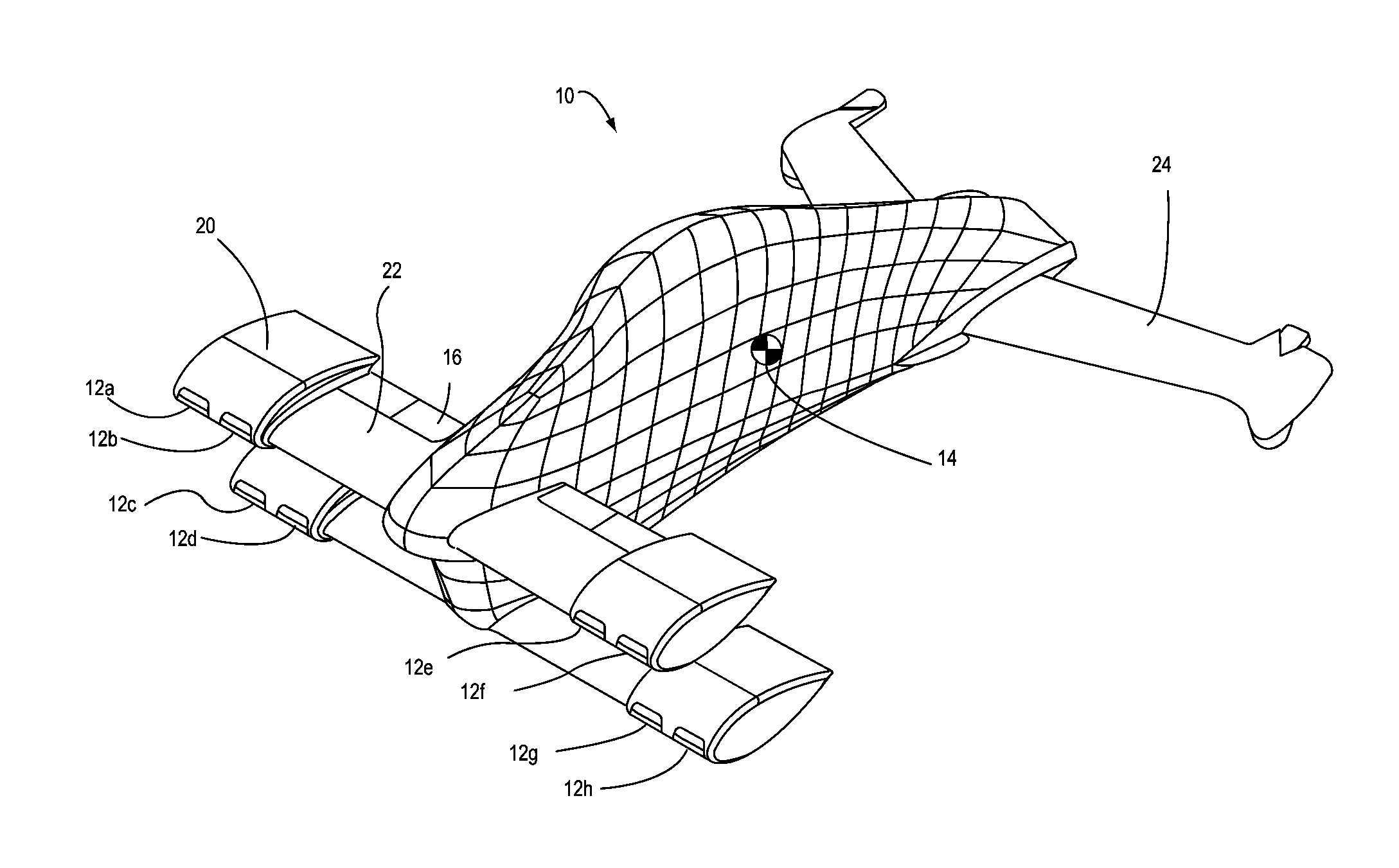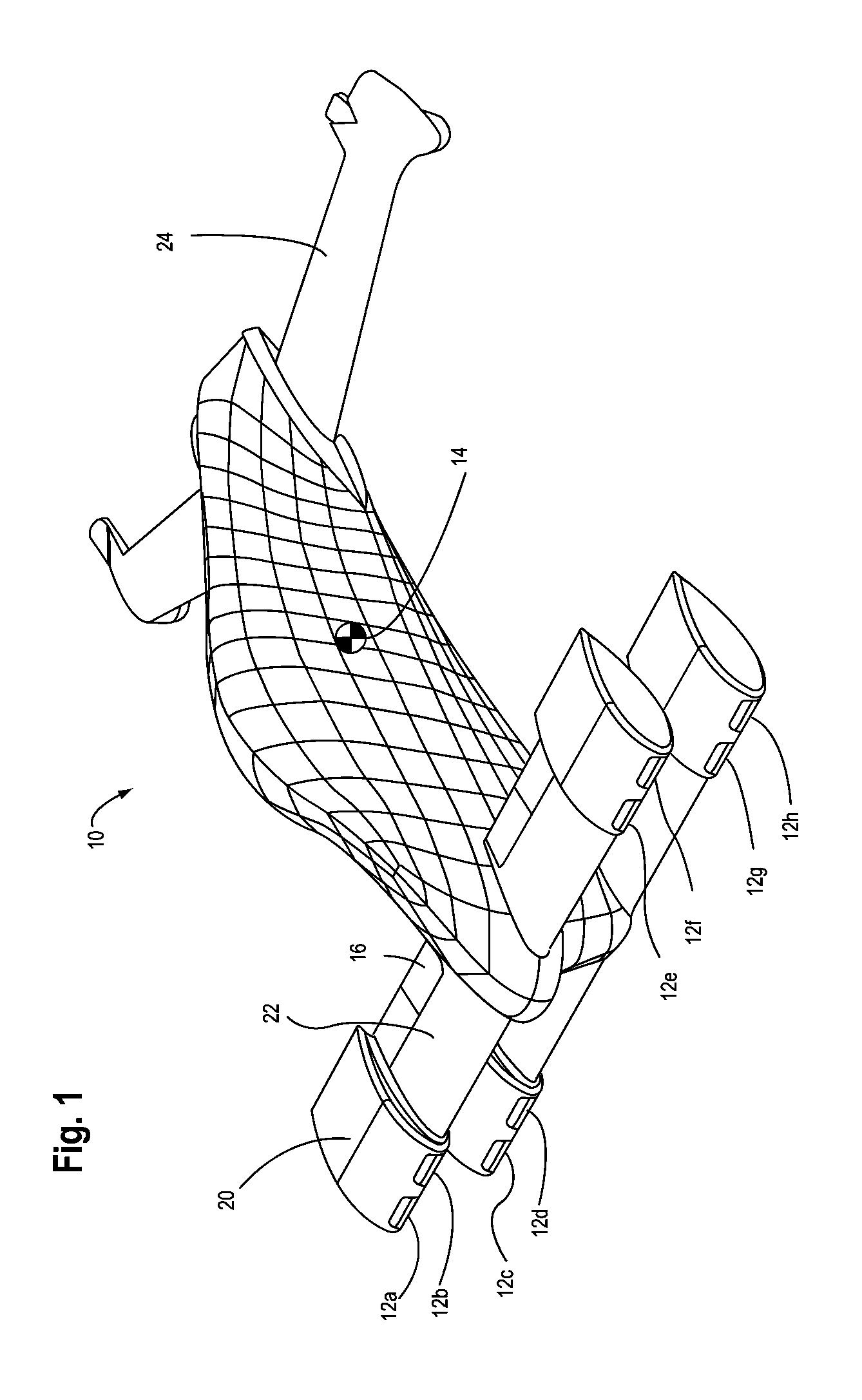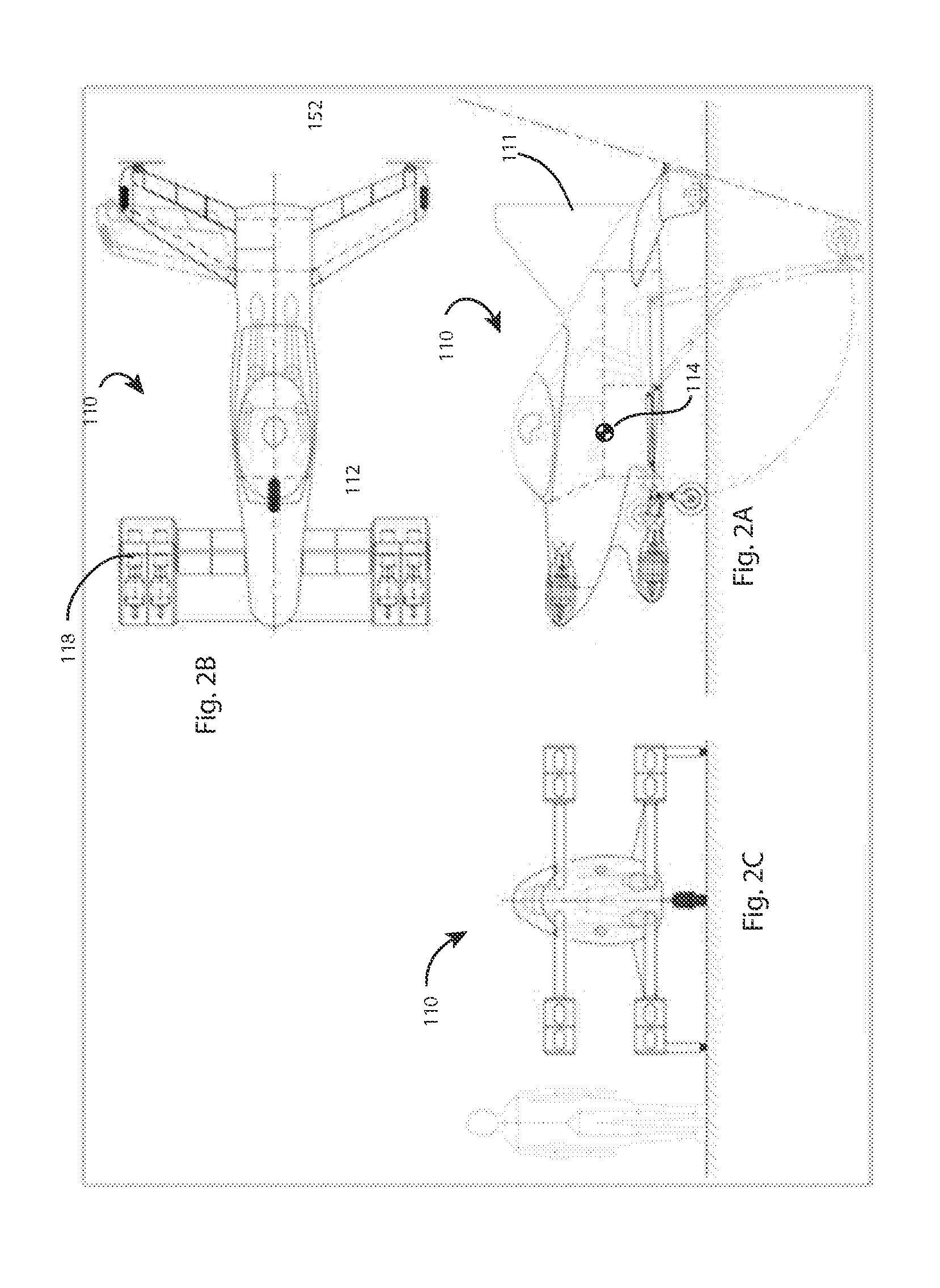Vertical Takeoff and Landing ("VTOL") Aircraft
a vertical takeoff and landing technology, applied in vertical landing/take-off aircrafts, aircraft navigation control, canard-type aircraft, etc., can solve the problems of little to no cross-sectional area, inability to safely and efficiently taxi aircraft while in vertical position, and add instability to the landing, so as to maximize comfort, maximize comfort, and improve directional stability in flight
- Summary
- Abstract
- Description
- Claims
- Application Information
AI Technical Summary
Benefits of technology
Problems solved by technology
Method used
Image
Examples
Embodiment Construction
)
[0055]The preferred embodiment as shown in FIG. 1 is a tail-sitting aircraft 10 carrying at least one pilot. The aircraft can be flown without a pilot, or scaled up to larger size to carry more payload and passengers, given engines of sufficient thrust. The engines (12a-h) are mounted forward on the airplane so that the engine exhaust is as far as possible from the ground during takeoff and landing , among other objectives described hereunder. While eight engines are shown more engines or fewer engines may be used. When using turbines to generate thrust through the high-temperature combustion of fuel, this forward configuration minimizes the potential to burn the ground or nearby objects, which is a common problem with jet-powered VTOL aircraft. During near-hovering flight the normal position of the nozzles is such that exhaust is vectored away from the airplane, as will be described further hereunder. This exhaust direction also reduces the circulation of exhaust back up towards t...
PUM
 Login to View More
Login to View More Abstract
Description
Claims
Application Information
 Login to View More
Login to View More - R&D
- Intellectual Property
- Life Sciences
- Materials
- Tech Scout
- Unparalleled Data Quality
- Higher Quality Content
- 60% Fewer Hallucinations
Browse by: Latest US Patents, China's latest patents, Technical Efficacy Thesaurus, Application Domain, Technology Topic, Popular Technical Reports.
© 2025 PatSnap. All rights reserved.Legal|Privacy policy|Modern Slavery Act Transparency Statement|Sitemap|About US| Contact US: help@patsnap.com



